Hello, community! I don’t know how it was for you, but my most popular search query in childhood was “how to make money playing games?”. Although, maybe that was the second most popular query, to be honest.
It’s probably been about 15 years since then. And I’m truly glad that today my dream has basically come true. Because you really can make money, even significant amounts, in CS 2. But how does it work, and more importantly — how much money does it bring? Let’s dive into today’s big review.
Before we start, let’s remind you that earlier we talked about what gamification in marketing is. Worth checking out!
Why is this important?
Let’s start with the main point. Earning from skins in CS 2 is not just about monetizing a hobby, as it may seem at first glance. It’s a self-sufficient market worth investing in to generate profit.
One of the main reasons we’re even writing about this is a relatively recent Bloomberg article. In it, experts concluded that the CS 2 skins market has brought investors much higher returns than stocks and cryptocurrency.
The value of some skins exceeds $1 million, others cost hundreds of thousands. Some containers have tripled or more in price over just a few years. So without a doubt, this is a highly promising niche. But to profit from it, you need to understand who is willing to pay, why, and how much.
But let’s start with the basics: what are skins in CS 2 anyway? Because not everyone has time for games. Some people actually work (why would you even bother?). Don’t worry, we’ve prepared a review as detailed as our time and inspiration allowed. So it will be informative, and hopefully interesting too.
What are skins in CS 2, are there other items?
The game has a large number of skins. They are purely cosmetic, meaning they do not affect weapon performance in any way. Damage doesn’t change, animations mostly don’t either, except maybe for knives.
Skins can be applied to any weapon. There isn’t a single type of weapon in the game without at least one alternative look. Perhaps the only exception is the bomb, but it’s just a matter of time before it gets a skin too.
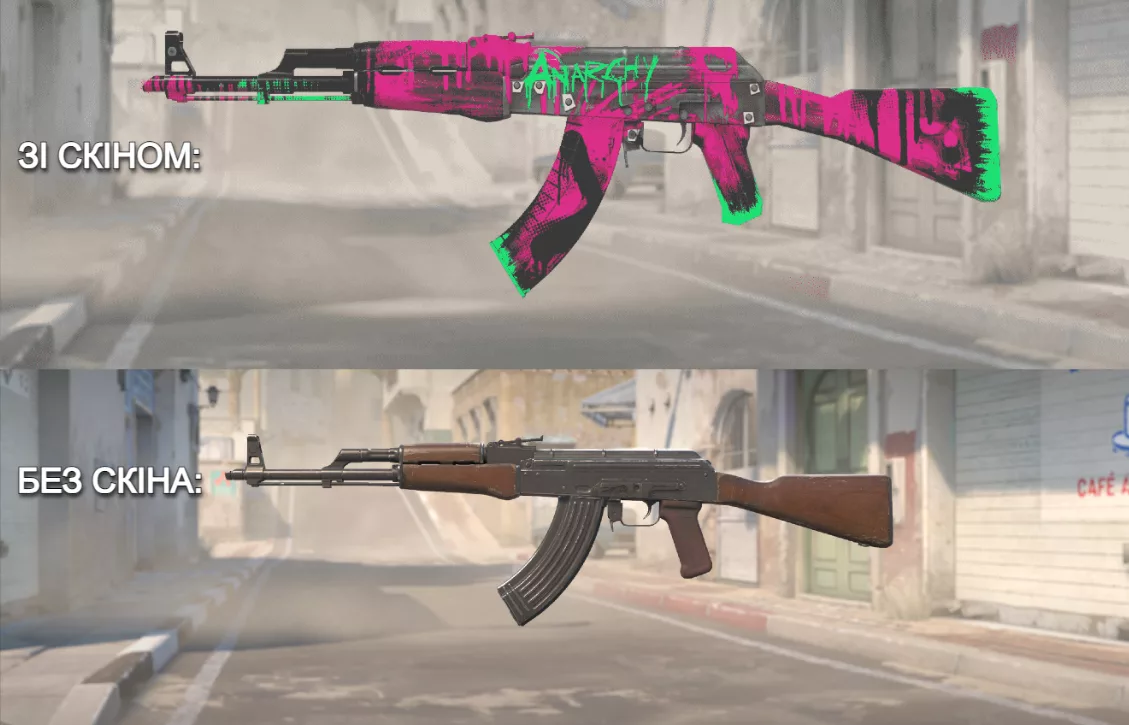
There are also skins for knives and gloves. The game also features agents you can buy, which only change the character model’s appearance.
But skins aren’t the only thing in the game. There are containers that hold skins, sticker capsules, and the stickers themselves. Recently, charms were added as well. There are also patches, though they’re becoming less relevant for some reason. I can’t even remember the last time new patches were released for agents.
If we generalize, the most valuable items are knives and gloves. The reason is simple: they’re always visible. Unlike, say, an AK-47 that you can only buy as a terrorist (and only if you have the in-game money), gloves and knives are always with you. Developers understood this, so these two item types belong to the “gold” rarity, meaning they’re the hardest to get from a case. But we’ll get into that in more detail later.
What types of skins and items exist in CS 2?
CS 2 skins have a lot in common with NFTs. Yes, Steam isn’t a decentralized platform, and skins don’t fully belong to you. For example, you can’t transfer them to another platform. They only exist within Steam.
Still, skins have unique properties — there are no two identical ones. Well, almost. We’ll talk about that “almost” a bit later.
The main classification of skins is based on rarity. There are consumer-grade, industrial-grade, mil-spec, restricted, classified, and covert. Some can also come with StatTrak counters, which increase value — though not always significantly.
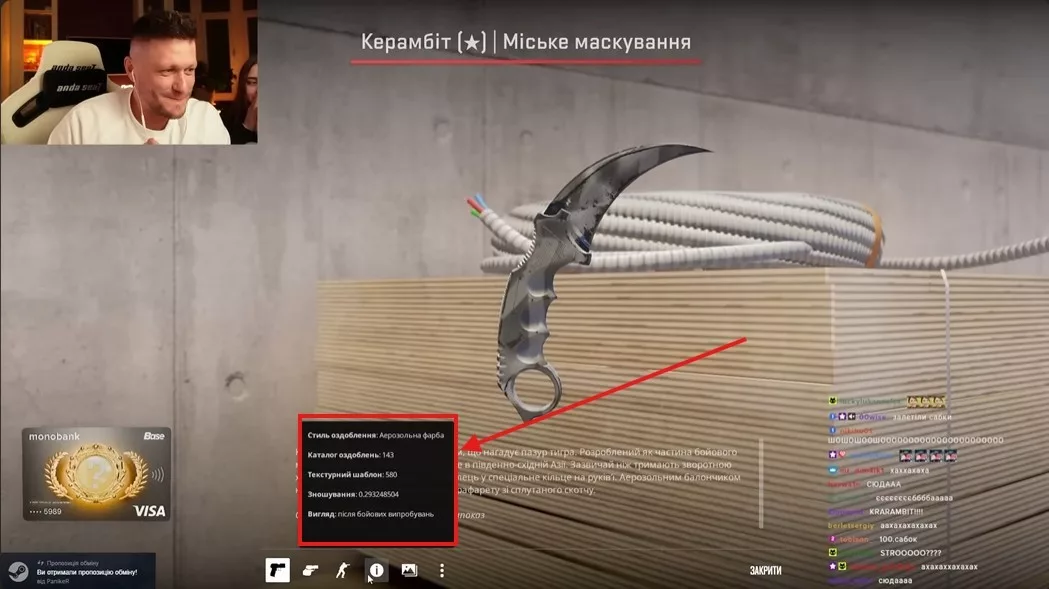
Each weapon skin has several attributes that make it unique:
- Finish style and catalog. Has almost no visual effect.
- Texture template / pattern. Defines how the texture appears on the item. Some skins depend heavily on this and can look unique depending on the pattern (e.g., sapphire or ruby knives).
- Wear level, or float. The higher the value, the more “worn” the skin looks (scratched, faded, etc.). Some simply lose brightness. Importantly, a skin’s wear doesn’t increase over use — it’s fixed when the item is unboxed. Each float value is unique for every skin.
Usually, worn skins are cheaper, but there are exceptions. For example, the AWP Asiimov Blackscope. Its white scope darkens depending on wear, and at maximum wear it turns completely black, making it unique and highly collectible.
No two skins share the same float. For instance, you won’t find two AWP Asiimovs with identical wear values. That’s why floats have so many decimal places — to make every skin technically unique.
But dupes exist. Their era has mostly passed, but they’re still remembered. Dupes are skins created through bugs, server rollbacks, contract loopholes, etc. They are duplicates without unique floats. VALVE works hard to eliminate dupes, but a few remain.
As for patterns, things get more interesting. As mentioned earlier, sometimes a pattern drastically changes how a skin looks. A vivid example is Doppler knives. There are several pattern types: regular, Black Pearl (more purple), Sapphire (fully blue), and Ruby (fully red).
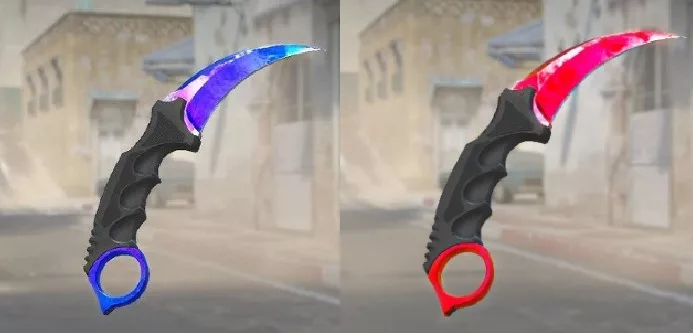
Unique patterns are very rare. As a result, they significantly affect skin prices. The most famous is the Karambit Blue Gem. It’s a Case Hardened skin. If someone gets it Factory New with pattern #387, its value is about $1,500,000. Yes, one and a half million dollars.
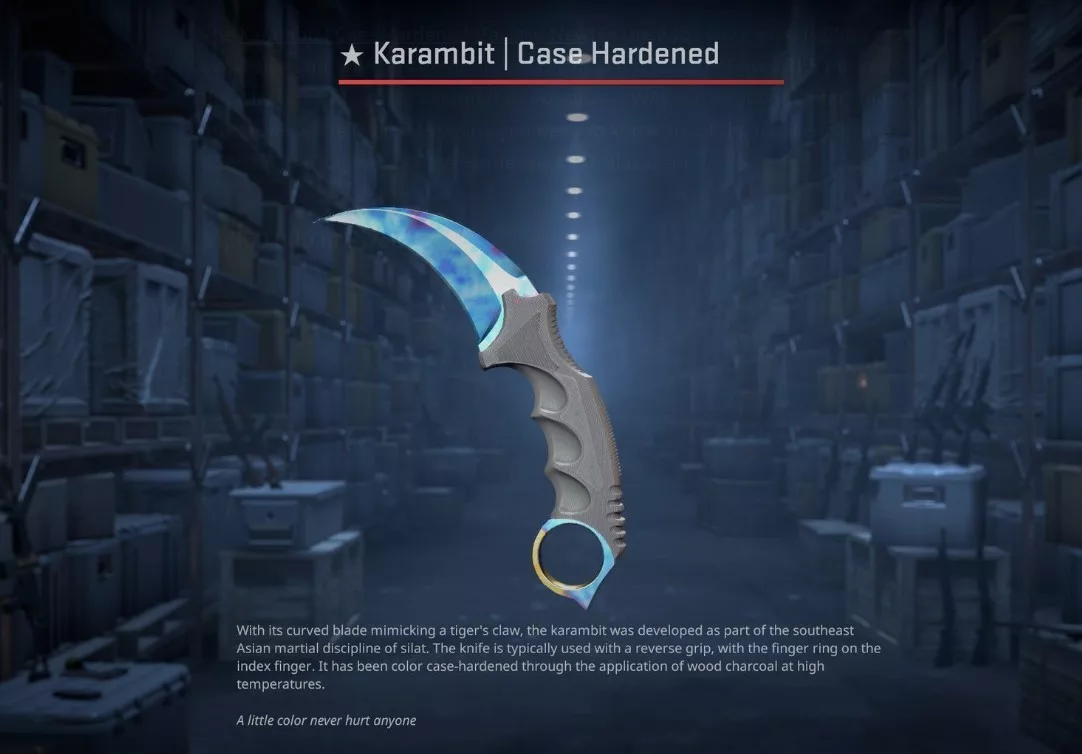
And notably, if it’s the same skin with another pattern and different float, the value could drop 10, 100, or even 1000 times. The cheapest Karambit Case Hardened goes for about $1000.
Items without attributes
Not all items in the game have attributes. For example, cases and containers have none. The main factor affecting their value is supply — the number available on the market. The more sticker capsules there are, the cheaper they get.
Some capsules are released exclusively during major tournaments, then removed from sale, leaving the market to players who bought them in advance. In recent years, they’ve been less attractive investments, because people have caught on and now mass-purchase them. Still, there are examples of such capsules reaching insane prices.
For example, the famous Katowice 2014 capsules. Some stickers from that collection sell for $70,000 each, and unopened capsules are worth tens of thousands too.
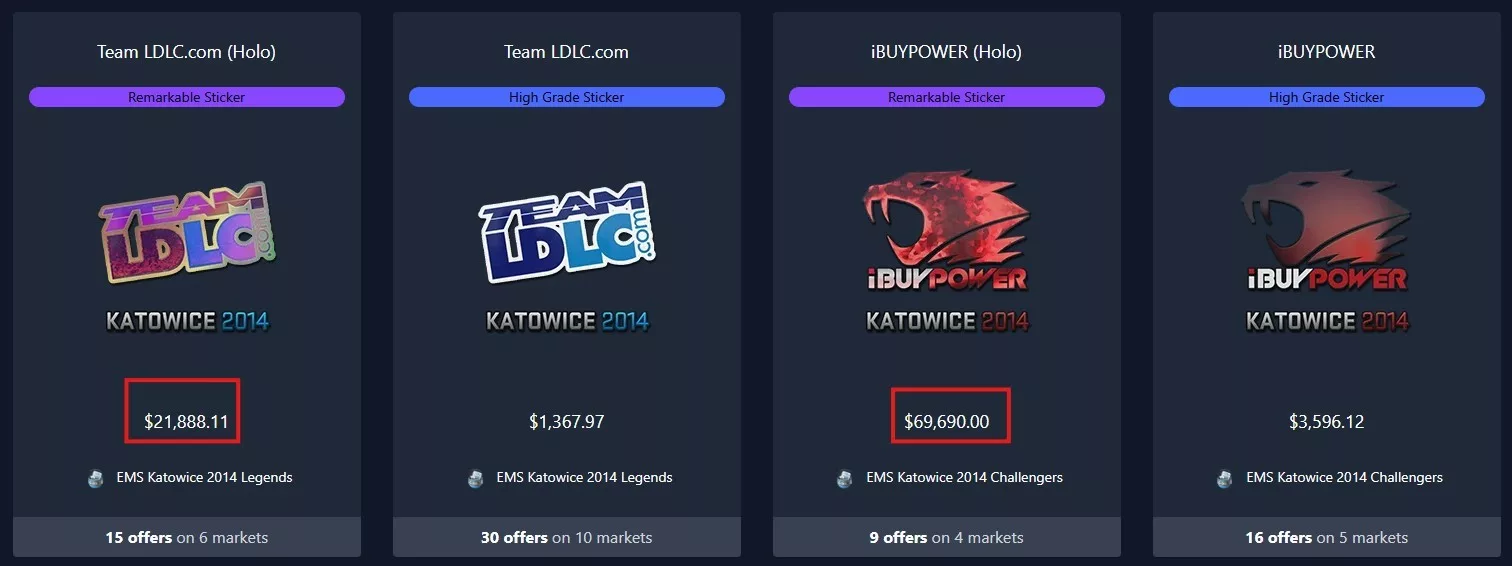
The reason is the limited number of these capsules. Due to issues with the tournament itself, they were quickly removed from sale, leaving only those already owned. With each opened or sold Katowice 2014 capsule, the remaining ones get rarer and more expensive, making them highly attractive investments.
Some capsules on sale cost less than $1. So you can calculate ROI yourself. I won’t. It’s been painful for me for ten years already, damn FOMO.
Stickers differ only in rarity. If applied to a weapon, they can also be scratched. Players can scratch stickers, sometimes revealing hidden Easter eggs under the main design.
Where to get skins in CS 2 and where to sell them?
Now that we’ve covered the types of skins, the big question is: where do you actually get them? Get comfortable — there are many options.
Weekly drop
Prime players can get weekly drops. By leveling up, they can choose 2 items out of 4: one case, two skins, and one graffiti.

Skins drop from specific collections, and recently new ones were added, with some worth thousands of hryvnias. So right now is one of the best times to profit from drops.
By the way, in our Discord we often play CS2. Recently, a friend got a CS:GO case from early collections right after our match — it’s now worth about 6000 UAH. That’s some real luck!

Cases also drop from a pool, with some much more likely than others. Rarely, you’ll get early cases worth tens of dollars. But that’s rare.
Graffiti usually isn’t worth much. But sometimes it’s better value than the skins offered, so pay attention before making your choice.
Prime status itself costs 600 UAH. It’s a one-time purchase.
Open from case
You can also unbox skins. A key costs 100 UAH. The chance of unboxing a skin worth even close to that is extremely low. It’s pure gambling and should not be treated as a real investment. It’s a casino, tolerated for some reason. Which is odd.
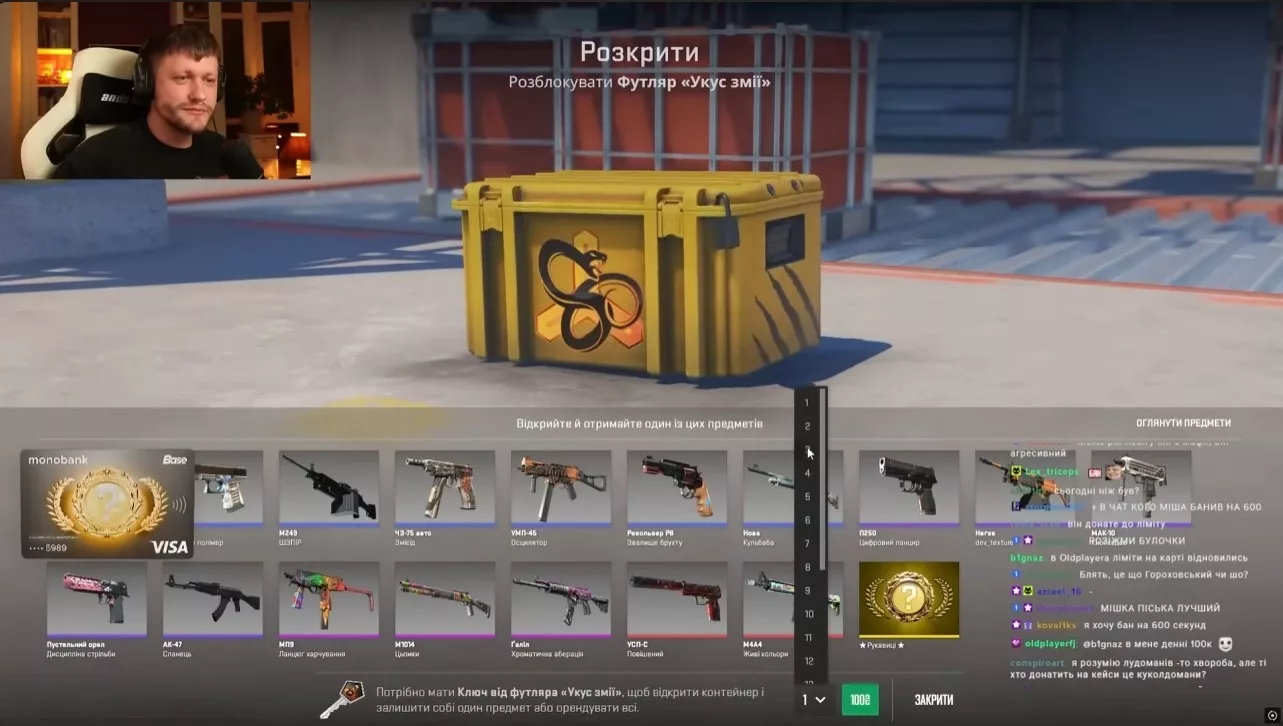
Valve doesn’t disclose drop rates, but the community has calculated them:
| Rarity | Normal | StatTrak |
| Blue | ≈ 80% | ≈ 8% |
| Purple | ≈ 15% | ≈ 1.6% |
| Pink | ≈ 3% | ≈ 0.3% |
| Red | ≈ 0.65% | ≈ 0.06% |
| Gold | ≈ 0.25% | ≈ 0.025% |
So on average, knives drop once every 400 cases. Keys alone will cost about $1000. And not all knives are worth more than $1000 — some are under $100. So is it worth opening cases? Of course not. Unless for fun, but keep in mind this can lead to gambling addiction.
Contracts
CS 2 also has contracts. You combine 10 items of the same rarity to get one of a higher rarity. 10 blues become one purple, 10 purples — one pink, and so on.
You can’t turn 10 reds into gold. And contracts in general aren’t great, since the market is efficient. Finding profitable “recipes” is almost impossible. Almost.
Sometimes you can combine collections to increase chances of hitting profit. But it’s still gambling, albeit more predictable.

You can even use special calculators to check contract profitability. They show all possible outcomes and allow manual float input, e.g. to aim for unique numbers.
Buying in-game
You can buy capsules, weapon cases, and even individual skins directly in-game.
One way is via battle passes, where you earn stars to exchange for items. ROI is usually calculated by dividing the pass price by 40 (max stars), then checking which items offer the best value per star.
Another way is during major tournaments. Capsules with team/player stickers are sold, then removed from sale, leaving only market offers. Same for compendiums, where you place predictions and earn collectible cases.
It’s hard to predict sticker capsule or collectible case prices, since no one knows how many were redeemed or will be opened. The lower the supply, the higher the value.
Also, collections tied to retired maps can rise in value. Like Cobblestone — when the map was removed, its collection was removed too. Now those cases cost from $1300 and up.
Price also depends on which tournament the collectible case comes from, since its skins will have golden stickers tied to that event.
Buy or sell on the community market
Another way to get skins is the community market. It has a huge number of items, with supply constantly growing.
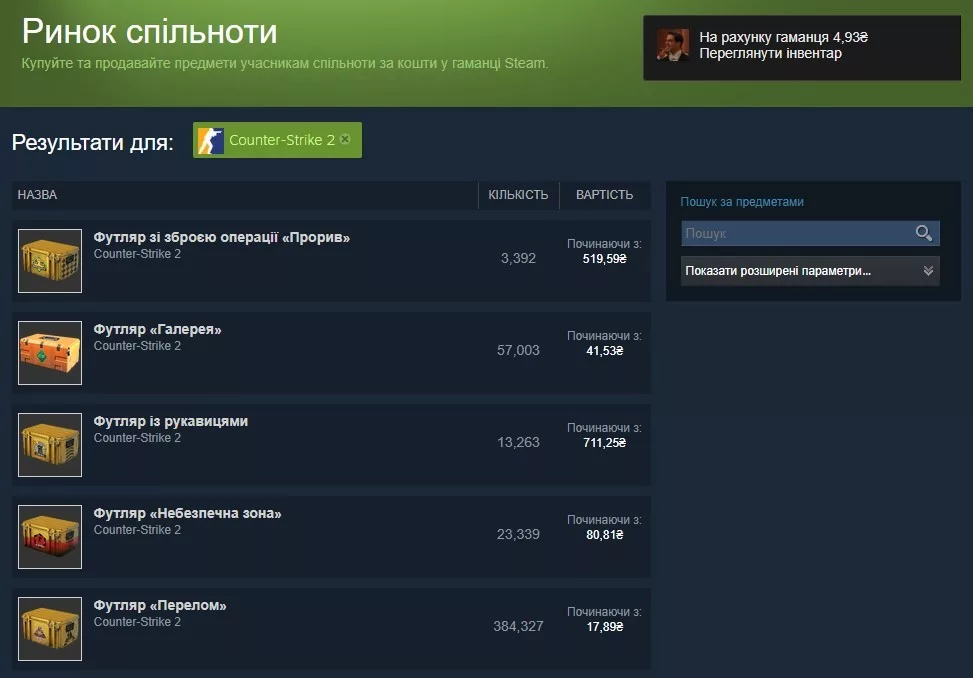
The advantage is convenient filtering and the ability to place buy orders. You set your price, wait for a seller. Same with selling.
But there are downsides: high fees, and maximum price limits, meaning no ultra-rare items worth tens of thousands will be listed here.
Also, money stays on your Steam account and cannot be withdrawn.
Third-party marketplaces
This is where rare and expensive items can be found with lower fees.
For example, Dmarket, a Ukrainian platform that also raised almost $200k to support the army.
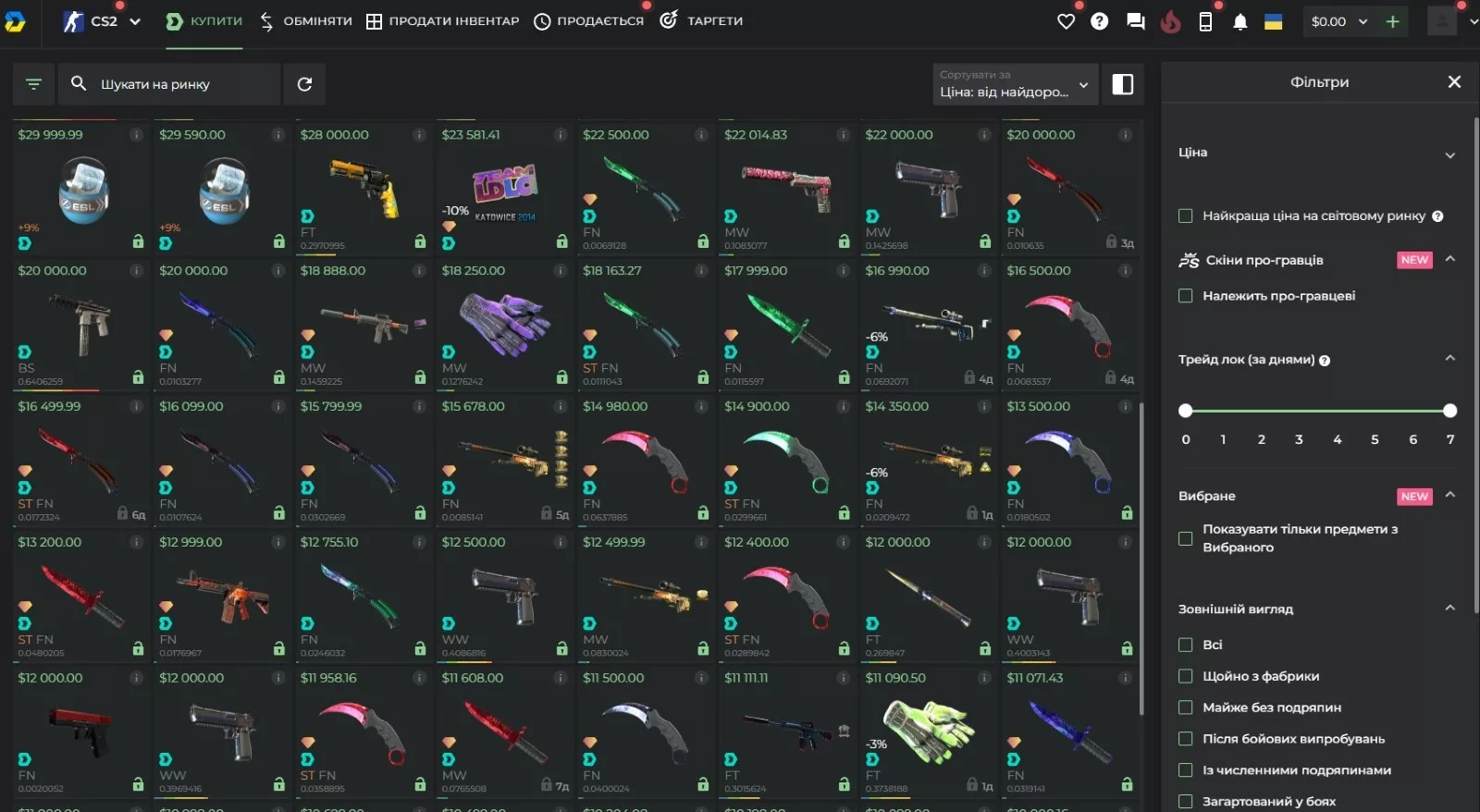
These marketplaces also allow payment via crypto, unlike Steam.
You may also find better deals than on the community market, depending on deposit/withdrawal methods. Just avoid shady platforms.
Plus, loyalty programs and giveaways sometimes let you grab skins for free. Small but nice.
Skin auctions
Beyond markets, there are auctions. The top ones are Chinese, since many Chinese collectors are willing to overpay for rare skins, even for unusual float numbers like 0.696969.
Auctions let you get maximum value for rare skins, like those with Katowice 2014 stickers. These can be very profitable investments, but entry costs are high.
You can also maximize profits on unique or old items with very limited supply. Auctions draw more attention, pushing prices higher.
P2P trades
The riskiest way to trade skins is P2P. Steam supports safe trades, but if you involve real money (e.g., send USDT, I send skin), it’s highly risky.
If you own an expensive skin and still want to risk it, find a trusted middleman. For example, the well-known streamer and CS 2 skin investor Zipel used to act as a guarantor. Later he co-founded Skinbid, a major skin auction.
What to invest in CS 2?
Looking at price trends, it’s clear not every item appreciates. Some skins just keep getting cheaper, as supply grows and demand stays low. For example, blue skins from popular cases for unused weapons will never cost more than a case key.
On the other hand, cases rise sharply when removed from active drop pools. These rotations happen occasionally, and rumors usually spread before changes. So you need to be ready.
Sometimes cases spike because groups of Chinese investors manipulate the market — like with the Glove Case recently.
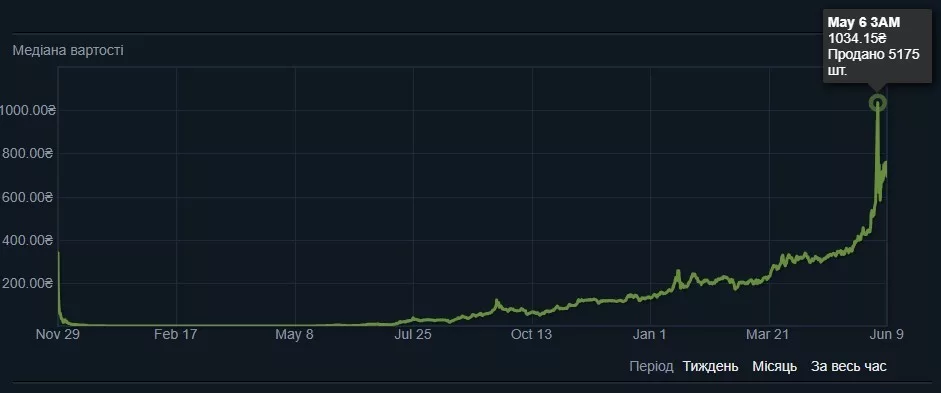
That case once sold for pennies. And once again, calculate ROI yourself — my FOMO still hurts. I even sold that exact case years ago for just 100 UAH.
So, what’s worth investing in:
- Cases. They always appreciate. Ideal long-term investment. If they contain popular skins, even better.
- Sticker capsules. Not always, but often profitable. The exception: CS:GO’s last Major capsules, which still haven’t broken even. But in general, they rise long-term. Always buy during discounts near tournament ends.
- Individual stickers. Collect specific teams or players. Sometimes they shoot up in value — for instance, if a player leaves or a team disbands. Risky, but possible.
- Limited skins. Like the recent Desert Eagle with unique patterns. Hard to predict ROI but promising.
- Rare pattern skins. Rubies, Blue Gems, etc. The rarer the pattern, the higher the value, especially long-term.
Everyone builds their own “portfolio” and strategy. Our job is to give you the fullest understanding of how the market works.
And never invest in case openings or contracts. That’s gambling and you’ll only lose money.
Conclusion
It’s absolutely possible to profit from CS 2 skins. The market keeps growing and breaking records. The game itself stays popular thanks to major tournaments and new collections.
There’s no easy money here. But it’s definitely interesting, and long-term very profitable if you build your portfolio wisely, calculating both profit potential and risks. Because every investment carries risks.
But the risks of losing money on CS 2 skins are much lower than in crypto. Even Bloomberg notes this. So who are we to argue?
If you want to argue (constructively), join our Telegram community, where we constantly discuss new ways to make money online.
With respect and love for you and for games, your Geek!
